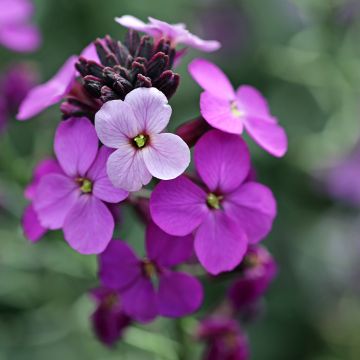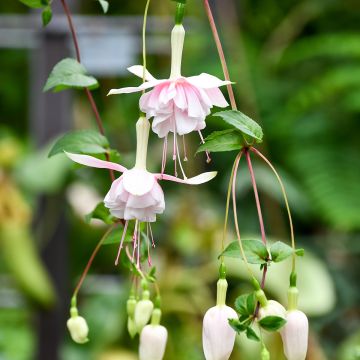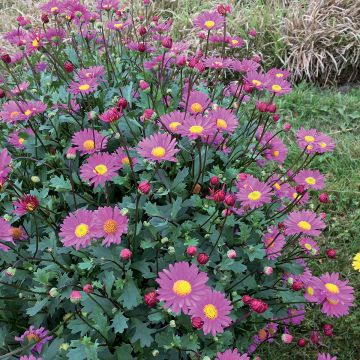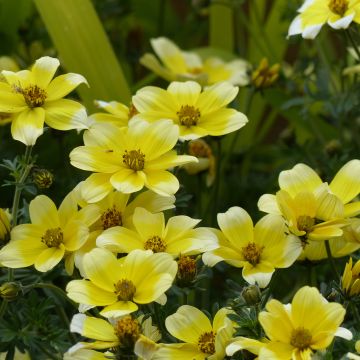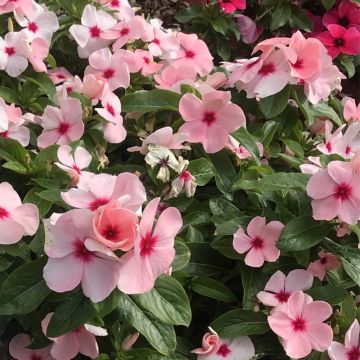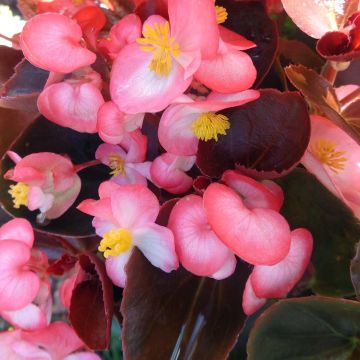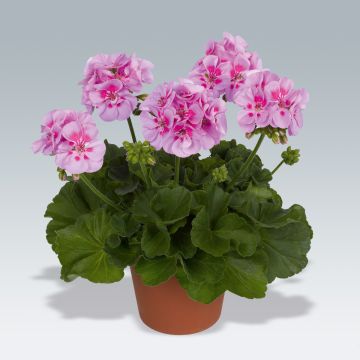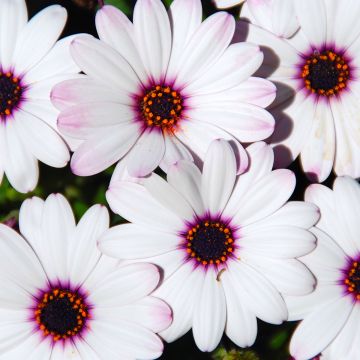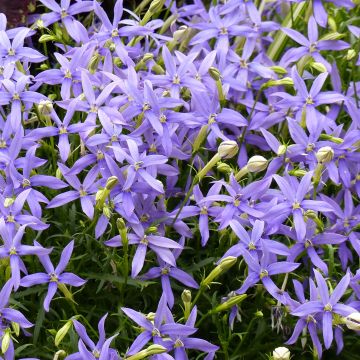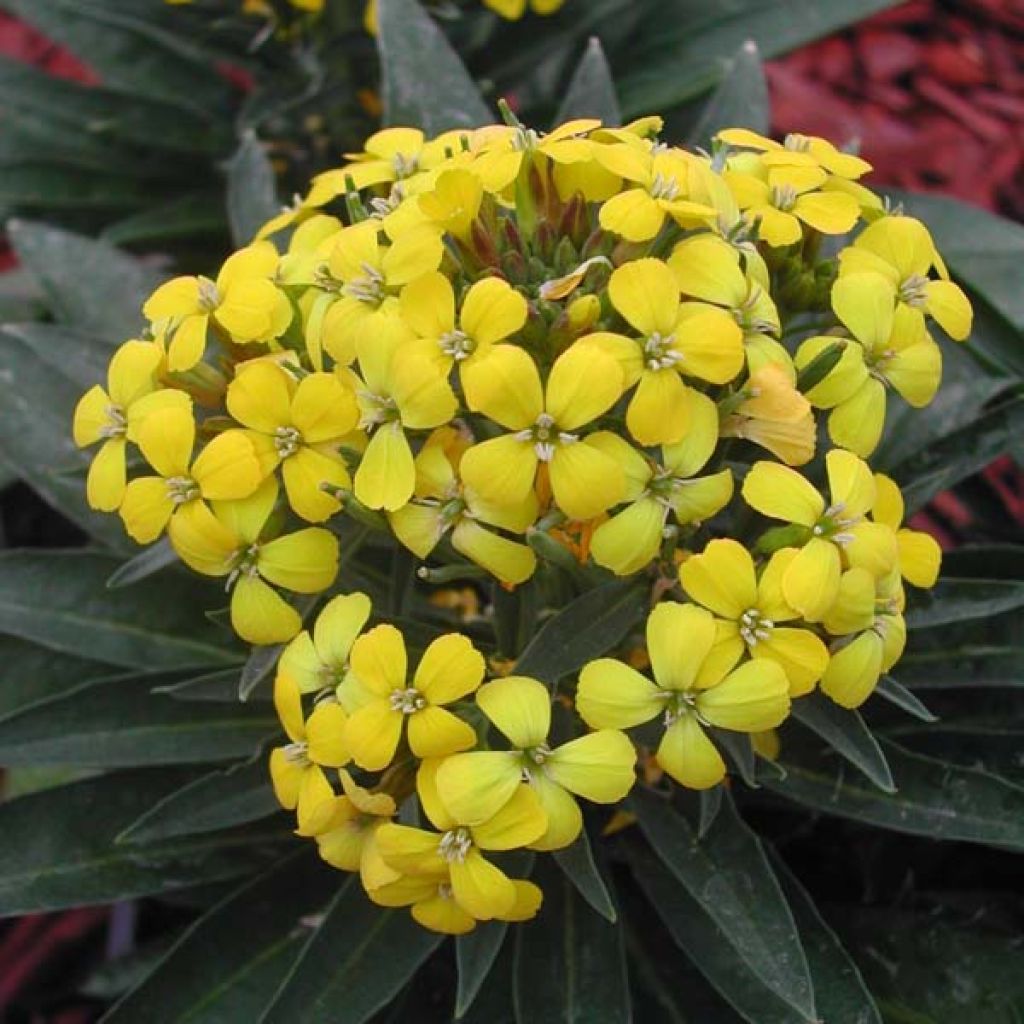

Erysimum suffruticosum Gold Cup - Wallflower
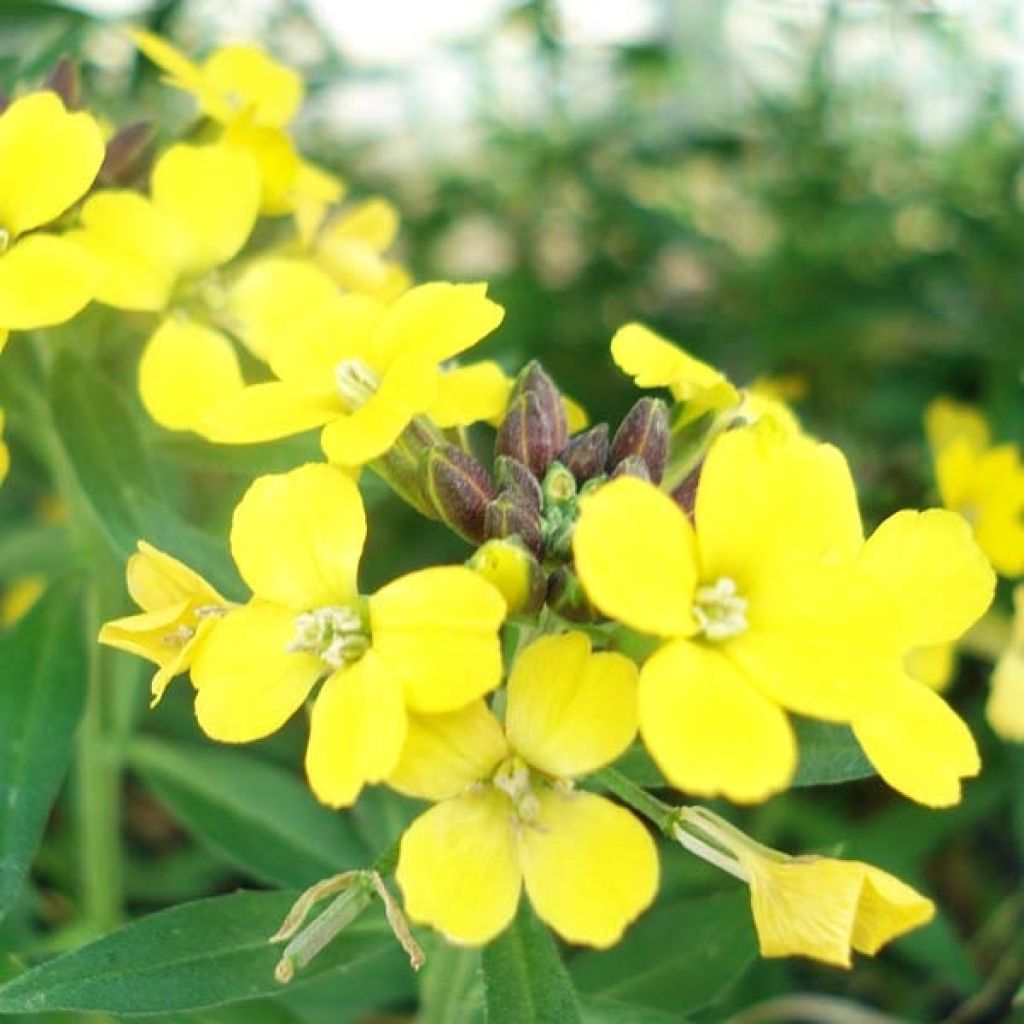

Erysimum suffruticosum Gold Cup - Wallflower
Erysimum suffruticosum Gold Cup - Wallflower
Erysimum suffruticosum Gold Cup
Shrubby Wallflower
First order, very pretty when I received them despite being tiny. None of them survived! Second order, out of 5 plug plants, still very tiny, only one survived, the others died. Now it has grown well and is budding.
Priscilla, 24/03/2024
This plant carries a 6 months recovery warranty
More information
We guarantee the quality of our plants for a full growing cycle, and will replace at our expense any plant that fails to recover under normal climatic and planting conditions.
From €5.90 for pickup delivery and €6.90 for home delivery
Express home delivery from €8.90.
From €5.90 for pickup delivery and €6.90 for home delivery
Express home delivery from €8.90.
Delivery to Corse prohibited: UE law prohibits the import of this plant from mainland France to Corse as part of the fight against Xylella fastidiosa. Please accept our sincere apologies.
More information
Does this plant fit my garden?
Set up your Plantfit profile →
Description
The Erysimum suffruticosum 'Gold Cup' is a variety of wallflower that is very compact, with small umbels of golden yellow flowers. It is distinguished by its autumn and winter flowering, exuding a honey scent with the slightest breath of warmth. This annual, biennial or short-lived perennial is very undemanding and is ideal either in pots or at the base of a flowerbed, forming a bright yellow carpet, which flowers in autumn and spring. Perfectly adapted to well-drained, poor, chalky soils, it flowers even during dry, hot springs, delighting owners of dry gardens ... or forgetful gardeners.
The Erysimum suffruticosum, also called Alpine Wallflower or sometimes Ravenelle Wallflower, is a short-lived perennial, often grown as an annual or biennial. It belongs to the Brassicaceae family, like cabbage, mustard or rapeseed. The 'Gold Cup' variety is a recent creation and a beautiful improvement of this species. Its habit is naturally compact, branching and spreading. The plant, adult after just a few months, measures 15 to 20 cm (5.9 - 7.9 in) in height when in bloom, with a spread of about 25 cm (9.8 in). From autumn onwards, it becomes literally covered with umbels of small sweet scented golden-yellow flowers. Braving the winter cold, its very dark green, evergreen foliage, will flower if the temperature rises a little. When spring arrives, this little wallflower blooms again, even more abundantly, with a scent released by the first warm days at the end of April.
Erysimum suffruticosum 'Gold Cup' thrives in rockeries and slightly barren chalky, well-drained soils, and can be planted from autumn on the edge of flowerbeds, near entrances or in window boxes, so you can take full advantage of its sunny, sweet-scented blooms throughout the winter. This wallflower goes well with garden pansies and horned violets, delighting in the autumn and bringing the celebration of the return of spring right to our doorsteps. It is great in a dry Mediterranean garden, taking advantage of the mild dampness of autumn, winter and spring, continuing to grow and deliver an almost uninterrupted fragrant flowering. This Erysimum is a true delight for lovers of simple, undemanding, but also exceptionally generous flowers.
Note: Please be aware that our young plug plants are professional products suited best to experienced gardeners: upon receipt, transplant them as soon as possible, in pots, planters or directly into the flower bed.
Report an error about the product description
Flowering
Foliage
Plant habit
Botanical data
Erysimum
suffruticosum
Gold Cup
Brassicaceae
Shrubby Wallflower
Cultivar or hybrid
Other Wallflowers
Planting and care
Plant after the last of the heavy frosts in a sunny or semi-shaded position. Flowering very abundantly and growing rapidly, they are nutrient-demanding. Feed them with a liquid fertilizer for planters once or twice a week during the growth period. Water regularly but not to excess. Deadhead to encourage flowering.
Planting period
Intended location
Care
-
, onOrder confirmed
Reply from on Promesse de fleurs
Plug plants - Annuals
Haven't found what you were looking for?
Hardiness is the lowest winter temperature a plant can endure without suffering serious damage or even dying. However, hardiness is affected by location (a sheltered area, such as a patio), protection (winter cover) and soil type (hardiness is improved by well-drained soil).

Photo Sharing Terms & Conditions
In order to encourage gardeners to interact and share their experiences, Promesse de fleurs offers various media enabling content to be uploaded onto its Site - in particular via the ‘Photo sharing’ module.
The User agrees to refrain from:
- Posting any content that is illegal, prejudicial, insulting, racist, inciteful to hatred, revisionist, contrary to public decency, that infringes on privacy or on the privacy rights of third parties, in particular the publicity rights of persons and goods, intellectual property rights, or the right to privacy.
- Submitting content on behalf of a third party;
- Impersonate the identity of a third party and/or publish any personal information about a third party;
In general, the User undertakes to refrain from any unethical behaviour.
All Content (in particular text, comments, files, images, photos, videos, creative works, etc.), which may be subject to property or intellectual property rights, image or other private rights, shall remain the property of the User, subject to the limited rights granted by the terms of the licence granted by Promesse de fleurs as stated below. Users are at liberty to publish or not to publish such Content on the Site, notably via the ‘Photo Sharing’ facility, and accept that this Content shall be made public and freely accessible, notably on the Internet.
Users further acknowledge, undertake to have ,and guarantee that they hold all necessary rights and permissions to publish such material on the Site, in particular with regard to the legislation in force pertaining to any privacy, property, intellectual property, image, or contractual rights, or rights of any other nature. By publishing such Content on the Site, Users acknowledge accepting full liability as publishers of the Content within the meaning of the law, and grant Promesse de fleurs, free of charge, an inclusive, worldwide licence for the said Content for the entire duration of its publication, including all reproduction, representation, up/downloading, displaying, performing, transmission, and storage rights.
Users also grant permission for their name to be linked to the Content and accept that this link may not always be made available.
By engaging in posting material, Users consent to their Content becoming automatically accessible on the Internet, in particular on other sites and/or blogs and/or web pages of the Promesse de fleurs site, including in particular social pages and the Promesse de fleurs catalogue.
Users may secure the removal of entrusted content free of charge by issuing a simple request via our contact form.
The flowering period indicated on our website applies to countries and regions located in USDA zone 8 (France, the United Kingdom, Ireland, the Netherlands, etc.)
It will vary according to where you live:
- In zones 9 to 10 (Italy, Spain, Greece, etc.), flowering will occur about 2 to 4 weeks earlier.
- In zones 6 to 7 (Germany, Poland, Slovenia, and lower mountainous regions), flowering will be delayed by 2 to 3 weeks.
- In zone 5 (Central Europe, Scandinavia), blooming will be delayed by 3 to 5 weeks.
In temperate climates, pruning of spring-flowering shrubs (forsythia, spireas, etc.) should be done just after flowering.
Pruning of summer-flowering shrubs (Indian Lilac, Perovskia, etc.) can be done in winter or spring.
In cold regions as well as with frost-sensitive plants, avoid pruning too early when severe frosts may still occur.
The planting period indicated on our website applies to countries and regions located in USDA zone 8 (France, United Kingdom, Ireland, Netherlands).
It will vary according to where you live:
- In Mediterranean zones (Marseille, Madrid, Milan, etc.), autumn and winter are the best planting periods.
- In continental zones (Strasbourg, Munich, Vienna, etc.), delay planting by 2 to 3 weeks in spring and bring it forward by 2 to 4 weeks in autumn.
- In mountainous regions (the Alps, Pyrenees, Carpathians, etc.), it is best to plant in late spring (May-June) or late summer (August-September).
The harvesting period indicated on our website applies to countries and regions in USDA zone 8 (France, England, Ireland, the Netherlands).
In colder areas (Scandinavia, Poland, Austria...) fruit and vegetable harvests are likely to be delayed by 3-4 weeks.
In warmer areas (Italy, Spain, Greece, etc.), harvesting will probably take place earlier, depending on weather conditions.
The sowing periods indicated on our website apply to countries and regions within USDA Zone 8 (France, UK, Ireland, Netherlands).
In colder areas (Scandinavia, Poland, Austria...), delay any outdoor sowing by 3-4 weeks, or sow under glass.
In warmer climes (Italy, Spain, Greece, etc.), bring outdoor sowing forward by a few weeks.

































